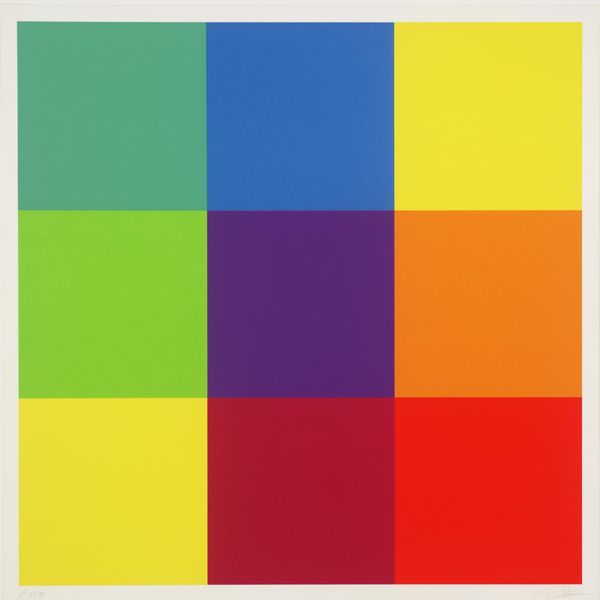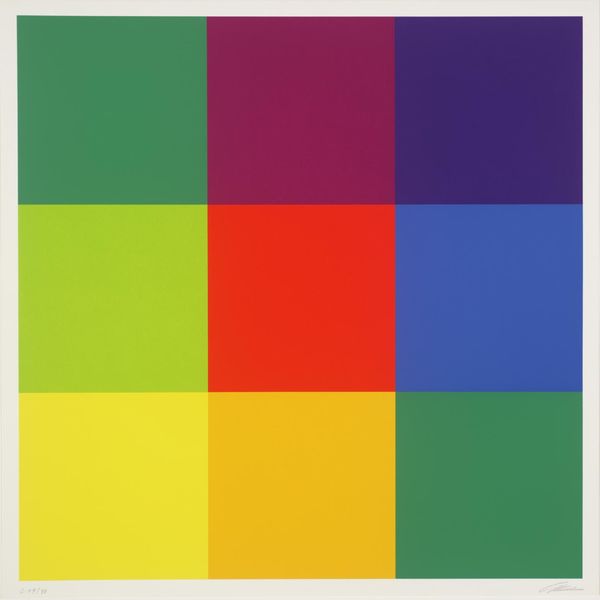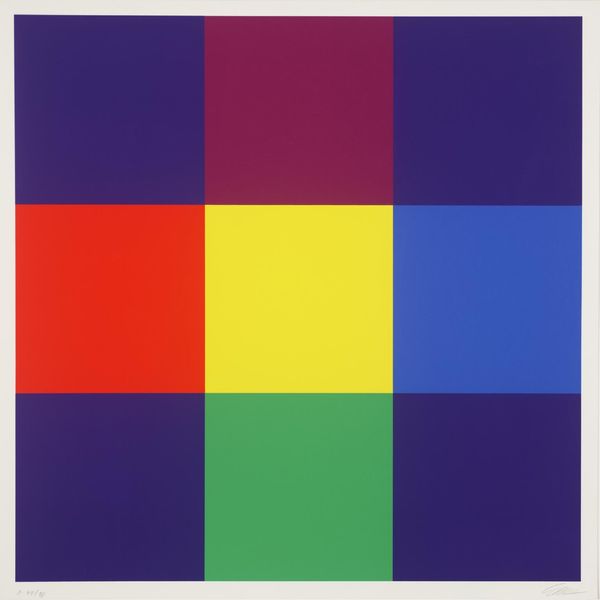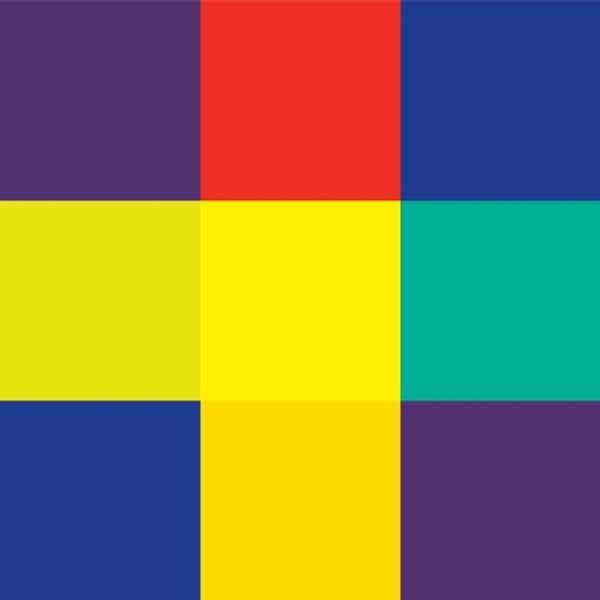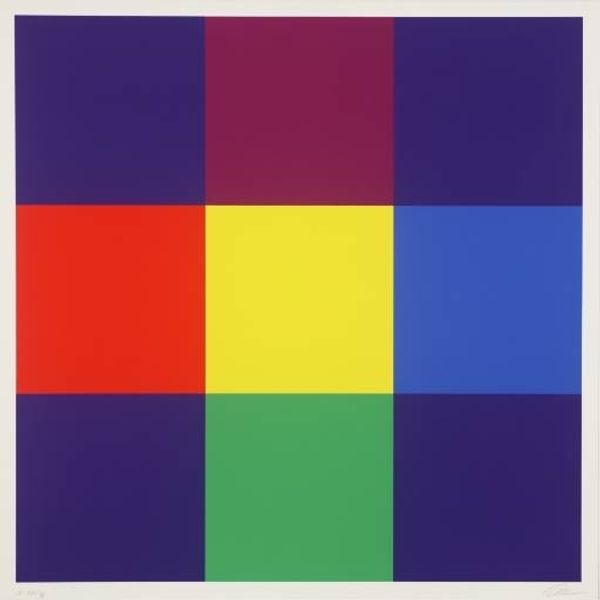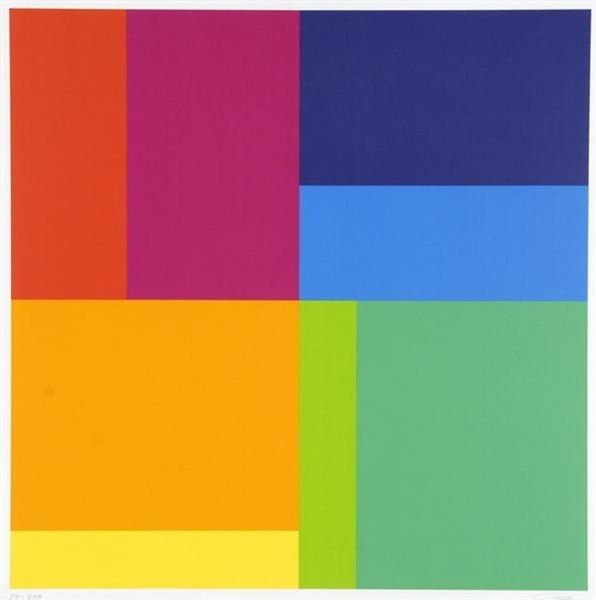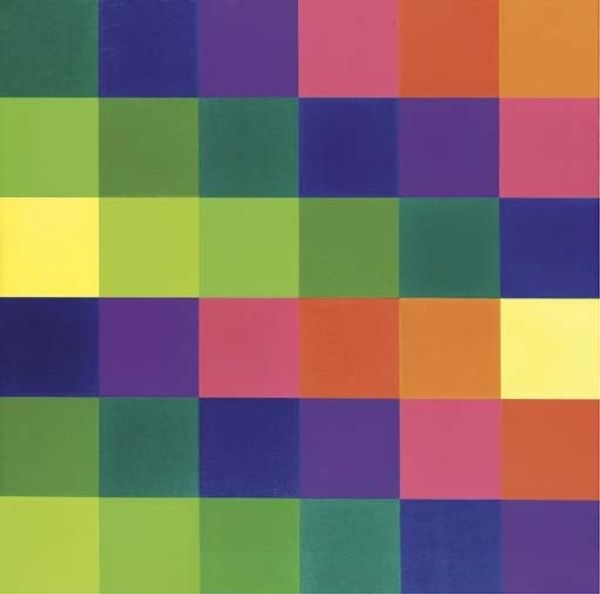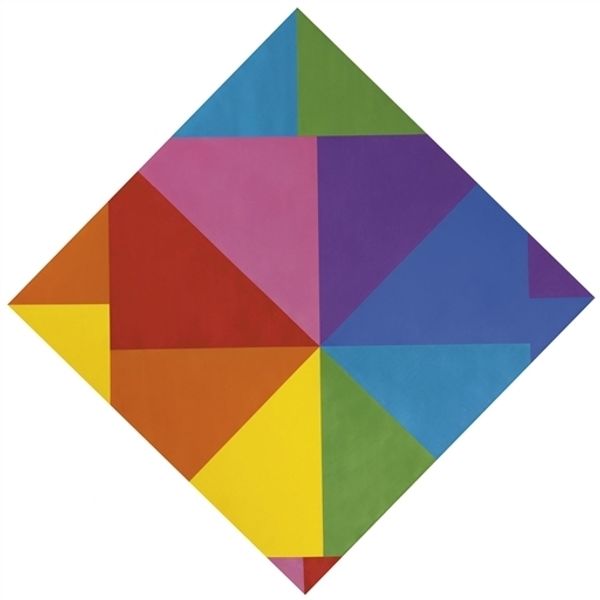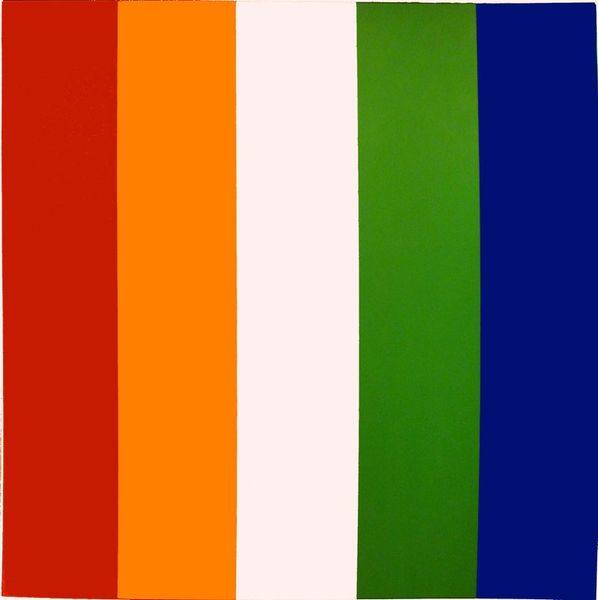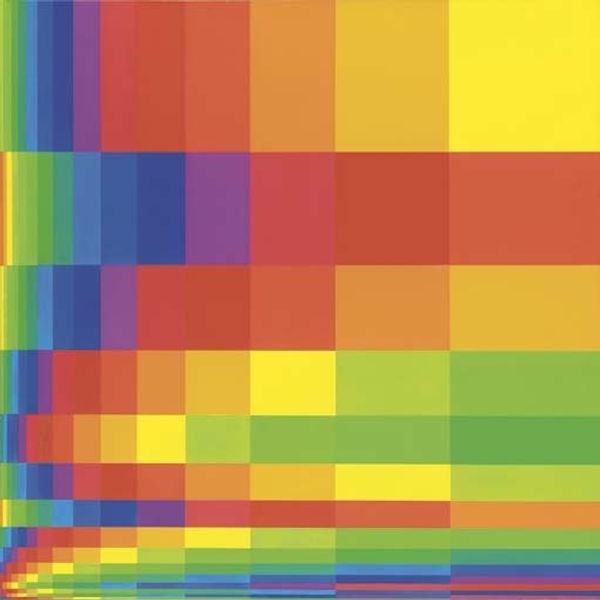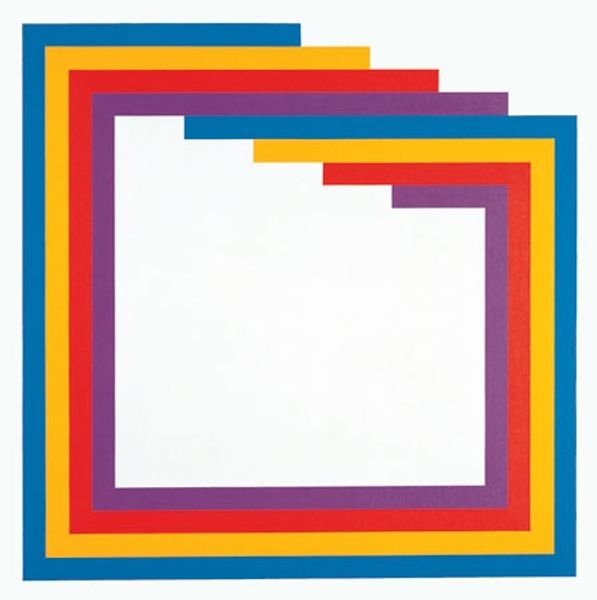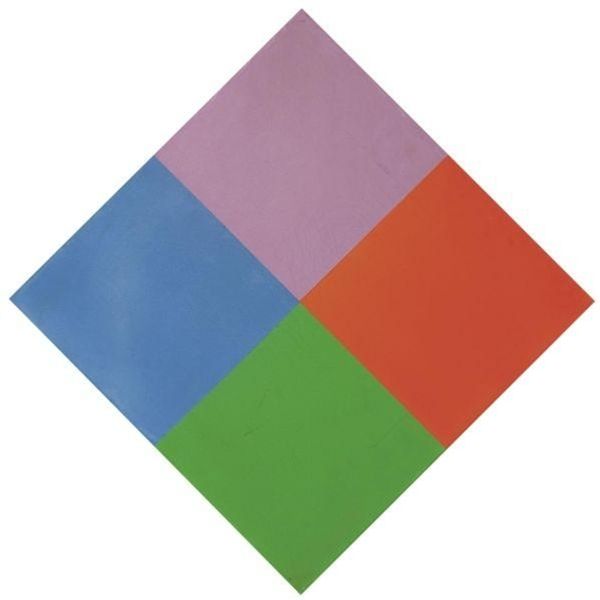![[no title] by Richard Paul Lohse](/_next/image?url=https%3A%2F%2Fd2w8kbdekdi1gv.cloudfront.net%2FeyJidWNrZXQiOiAiYXJ0ZXJhLWltYWdlcy1idWNrZXQiLCAia2V5IjogImFydHdvcmtzL2Q2ZmQyZDJmLWVhMTUtNGE5MS1iY2M3LTAzNDIzODYyMWI2MC9kNmZkMmQyZi1lYTE1LTRhOTEtYmNjNy0wMzQyMzg2MjFiNjBfZnVsbC5qcGciLCAiZWRpdHMiOiB7InJlc2l6ZSI6IHsid2lkdGgiOiAxOTIwLCAiaGVpZ2h0IjogMTkyMCwgImZpdCI6ICJpbnNpZGUifX19&w=3840&q=75)
Dimensions: image: 660 x 660 mm
Copyright: © DACS, 2014 | CC-BY-NC-ND 4.0 DEED, Photo: Tate
Editor: So, this untitled piece by Richard Paul Lohse, from the Tate collection, is simply nine squares of color. It feels so orderly, like a color chart. What am I meant to see in it? Curator: Consider the post-war context. Lohse, part of the Zurich Concrete artists, aimed to create universal, accessible art. How does this geometric abstraction challenge traditional, exclusive art forms? Editor: It's like he's democratizing color! Taking it away from traditional painting and making it available to everyone, visually. Is that the point? Curator: Precisely! The grid represents order, rationality, a utopian vision of art's role in society. What does the lack of hierarchy in the colors suggest? Editor: That all colors, and perhaps all people, are equal? It is starting to feel less like a color chart and more like a statement. Curator: Exactly. It reflects a desire to create a new visual language, free from the constraints of the past. Editor: I never thought squares could be so radical! Curator: Lohse's work prompts us to think about the social and political implications of abstract art.
